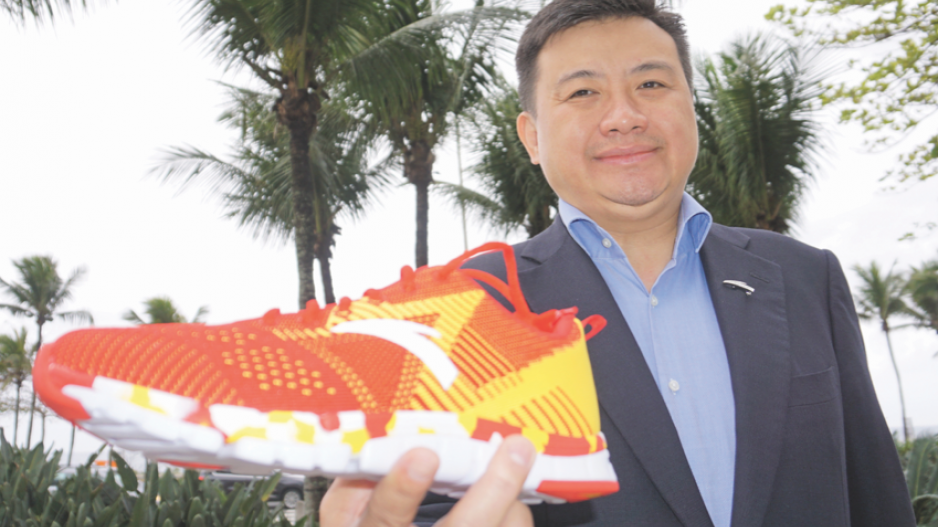The troubled British Columbia-incorporated parent of the Bauer Hockey brand bought itself more time to file its annual report.
But can Performance Sports Group (NYSE:PSG) (TSX:PSG) stay in the sporting goods game or is the game changing too fast for it and others?
The company, which is headquartered in Exeter, New Hampshire, announced August 30 that it staved off default and would file its financials by October 28. It missed an August 15 deadline, launched an internal investigation and hired external advisers to plot its next move.
The U.S. Securities and Exchange Commission is probing the company, which is also the target of a shareholder class-action lawsuit in New York.
PSG was hit with a double-whammy on both sides of the border: Canada’s slumping dollar and the Chapter 11 bankruptcy of U.S. national sporting goods retailer Sports Authority. But the trend toward e-commerce, competition from specialty shops and the rise of non-traditional sports popular with millennials means more challenges are ahead.
PSG painted a rosy picture in its report for the year ended May 31, 2015: US$655 million in revenue and US$98.3 million earnings before interest, taxes, depreciation and amortization, up from US$446 million and US$69 million, respectively.
But the outlook grew rapidly gloomy. In a March conference call with analysts, CEO Kevin Davis blamed weakening consumer demand, the Sports Authority bankruptcy and an unexpected downturn in retail sales.
“Additionally, the consolidation of hockey retail in the U.S. has reduced our customers’ demand for products more than we previously anticipated as they continue to reduce their inventory levels,” Davis said at the time. “In light of these events and challenges, including the bankruptcy of an Internet baseball retailer in the second quarter, we decided to increase our bad debt reserves for certain of our U.S. hockey and baseball/softball customers.”
Colorado-based Sports Authority racked up US$1.1 billion in debt and had tried to stay in business by closing stores and shifting to a greater reliance on e-commerce. But it was too little, too late for the fourth-biggest sporting goods chain in the U.S. The Denver Post reported that the company had a mix of stores ranging from 8,000 to 80,000 square feet and was losing business on one hand to amazon.com and to specialists like Lululemon (Nasdaq: LULU) and REI, the outdoor sports and recreation store similar to Mountain Equipment Co-op on the other.
PSG’s 2015 annual report said it had 5,000 retailers in Canada, the U.S. and Nordic countries, with the U.S. market the source of 58% of sales, versus Canada (24%) and the rest of the world (18%). Its top customer, Canadian Tire Corp. (TSX:CTC), accounted for 10% of its sales.
Bauer lost out on the National Hockey League’s seven-year uniform supply deal to Adidas, which will take over from its Reebok subsidiary in 2017-18.
Tom Cove, the Sports and Fitness Industry Association’s (SFIA) CEO, recently told members of the manufacturers’ lobby that “retail has been disrupted in a way no one could have predicted.”
While there is more casual participation, fewer people are involved in core sports and fitness, according to the SFIA’s annual state of the industry report. So-called “athleisure” and footwear sales are up, but performance wear and equipment sales are down. While there has been a significant retail contraction, there are ongoing pockets of retail sales strength.
The key to future success, according to SFIA research, is millennials. The report said the tech-savvy demographic represents a quarter of the U.S. population and US$200 billion in annual spending.
Millennials would rather have authentic experiences than goods. That would explain the trend for the last three years toward stand-up paddling, adventure racing and mixed martial arts as the fastest-growing sports.
On the other end of the scale, camping (-11.8%), bowling (-5.5%) and golf (-4.9%) have registered sharp participation declines. The industry report also noted declines in cycling, fishing and basketball.
Just before golf returned to the Olympic Games in August, Nike (NYSE:NKE) announced it would exit the golf equipment sector after sales fell 8% to US$706 million in 2015.
Even more disruption is on the horizon.
Fujian, China-based, Hong Kong Stock Exchange-traded ANTA Sports outfitted China’s Olympic athletes at Rio 2016 and is turning its attention to North American expansion. The company’s basketball shoes are on the feet of Golden State Warrior and U.S. Olympic gold medallist Klay Thompson. President James Zheng said exports to the U.S. and Canada, starting with the West Coast, are in the works. So is a research and development facility expected to be in the Pacific Northwest.
“We haven’t defined the place, but we are working on this, by the end of the year we will establish this,” Zheng said in an interview in Rio. “We need to really strengthen our research and development side for the sneakers, so it’s important to do that in this kind of innovation centre in the States.”
Meanwhile, Victoria-based Dryworld Industries is basking in the glow of the kickoff of the new English soccer season. Its kits for the Premier League’s Watford and the Championship Football League Division’s Queens Park Rangers are competing against Nike and Adidas. Dryworld plans to expand its retail and online offerings in the months to come. •




